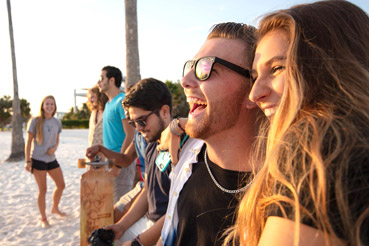Professor of Anthropology
Fax: 727-864-7995
Degrees
- Ph.D. in Anthropology; Arizona State University, Tempe
- M.A. in Bioarchaeology; Arizona State University, Tempe
- B.A. in Anthropology; Texas A&M University, College Station
Courses offered
Introduction to Anthropology, Biological Anthropology, Forensic Anthropology, Disease in Human Antiquity, Human Osteology and Anthropology.
Research
I have a broad background in biological anthropology with primary research interests in human skeletal variation, dental anthropology, health in the past, and public attitudes towards science and pseudoscience. My research has included fieldwork in the Southwest U.S., France, Egypt, South Africa, Caribbean, and Thailand. Currently, I am analyzing skeletal remains from a coastal archaeological site on the island of Carriacou, near Grenada (West Indies), where I hope to shed further light on prehistoric burial practices and pathology. I am also Co-Director of Bioarchaeology on a field school excavating the Iron Age cemetery at the site of Promtin Tai in central Thailand.

Selected recent publications
- *Tremblay K, Burnett SE. 2023. A test of dental ablation scoring criteria. Bioarchaeology International 7(1):94-102.
- Titelbaum AR, Burnett SE, Case DT. 2022. Developmental Conditions in Paleopathology. In Grauer A (ed.) The Routledge Handbook of Paleopathology. New York: Routledge, p 250-270.
- *Barnes AE, Case DT, Burnett SE, Mahakkanukrauh P. 2020. Sex estimation from the carpal bones in a Thai population. Australian Journal of Forensic Sciences 52(6):665-680.
- Burnett SE. 2019. A Stegosaur Carving on the Ruins of Ta Prohm? Think Again. Skeptical Inquirer: The Magazine for Science and Reason. Vol. 43 Issue 4.
- Burnett SE, Irish JD. 2017. Introduction to A World View of Bioculturally Modified Teeth. In SE Burnett, JD Irish (eds): A World View of Bioculturally Modified Teeth. Gainesville: University Press of Florida, p 1-16.
- Burnett SE. 2017. Intentional or not? Characterization and reassessment of proposed intentionaldental modification cases in the present-day southwestern United States. In SE Burnett, JD Irish (eds): A World View of Bioculturally Modified Teeth. Gainesville: University Press of Florida. p 250-269.
- Tocheri MW, Dommain R, McFarlin S, Burnett SE, Case DT, Orr CM, Roach NT, Villmoare B, Eriksen A, Kalthoff D, Senck S, Assefa Z, Groves CP, Jungers WL, 2016. The evolutionary origin and population history of the grauer gorilla. Yearbook of Physical Anthropology 159(S61): S4-S18.
- Burnett SE. 2015. Crown wear: Identification and categorization. In JD Irish, GR Scott (eds): A Companion to Dental Anthropology. New York: Wiley-Blackwell, Inc. p 415-432.
- Burnett SE, Stojanowski CM, Mahakkanukrauh P. 2015. The bipartite trapezoid bone: morphology, population variation, identification, and five new cases from Africa and Asia. Annals of Anatomy 198:58-65.
- Burnett SE, Troy Case. 2014. Interpretation of variant morphological patterns in the hallucal cuneometatarsal joint. Anthropological Science 122(3):123-129.
- Burnett SE, Irish JD, Fong MR. 2013. Wears the problem? Examining the effect of dental wear on studies of crown morphology. In GR Scott, JD Irish (eds): Anthropological Perspectives on Tooth Morphology: Genetics, Evolution, Variation. Cambridge University Press. pp. 535-554.
- Orr CM, Tocheri MW, Burnett SE, Awe RD, Saptomo EW, Sutikna T, Jatmiko, Wasisto S, Morwood MJ, Jungers WL. 2013. New wrist bones of Homo floresiensis from Liang Bua (Flores, Indonesia). Journal of Human Evolution 64(2):109-129.
*Eckerd College student/alumnus






